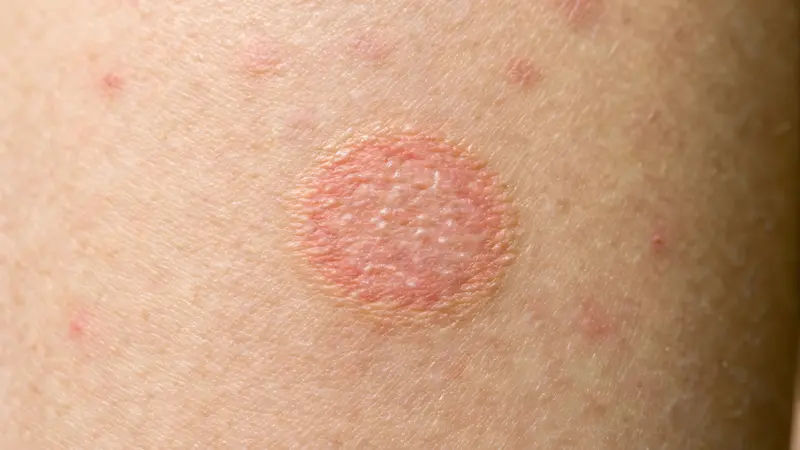How To Manage Hair Loss: Female Pattern Baldness Tips
Learn how to manage hair loss with expert tips on female pattern baldness. Discover causes, treatments, and lifestyle changes to promote healthy hair growth and confidence.

Written by
Last updated on 3rd Jul, 2025
Female pattern baldness, also known as androgenetic alopecia, is a common form of hair loss in women. Unlike male pattern baldness, which often results in a receding hairline or bald spots, female pattern baldness typically causes thinning hair across the scalp, especially at the crown. This condition can be distressing, but understanding its causes and treatments can help manage it effectively.
Female pattern baldness affects approximately 30 million women in the United States alone. It can occur at any age but is more common after menopause. The emotional impact of hair loss can be significant, affecting self-esteem and overall quality of life. Addressing it early and effectively is crucial for both physical and emotional well-being.
Causes of Female Pattern Baldness
Female pattern baldness can be attributed to several key factors, including the following:
Genetic Factors
Genetics play a significant role in female pattern baldness. If your mother, grandmother, or other close relatives experienced hair thinning, you may be more likely to develop it as well. The condition is linked to the inheritance of certain genes that make hair follicles more sensitive to androgens (male hormones).
Hormonal Changes
Hormonal fluctuations, particularly during menopause, pregnancy, or due to conditions like polycystic ovary syndrome (PCOS), can trigger hair loss. Reduced estrogen levels and increased androgen activity can shrink hair follicles, leading to thinner hair.
Lifestyle and Environmental Influences
Factors such as stress, poor nutrition, and exposure to environmental pollutants can exacerbate hair loss. Additionally, harsh hair treatments and tight hairstyles can damage hair follicles over time.
Symptoms and Diagnosis
The symptoms and diagnosis of female pattern baldness can be identified through the following key indicators and medical assessments:
Recognising Hair Loss Patterns
The primary symptom of female pattern baldness is the gradual thinning of hair, especially at the crown and part line. Unlike men, women rarely experience complete baldness but may notice wider part lines and less volume.
Diagnostic Tests and Procedures
A dermatologist can diagnose female pattern baldness through a physical examination and medical history review. They may also perform a scalp biopsy or blood tests to rule out other causes of hair loss, such as thyroid disorders or nutritional deficiencies.
Treatment Options
Various treatment options are available to help manage female pattern baldness and promote hair regrowth, including:
1. Medications and Topical Treatments
- Minoxidil (Rogaine): An FDA-approved topical treatment that stimulates hair growth and slows thinning. Apply it directly to the scalp twice daily.
- Spironolactone: An oral medication that reduces androgen levels, helping to prevent further hair loss.
- Finasteride: Although primarily used for men, some women may benefit from this medication under a doctor’s supervision.
2. Hair Transplant Procedures
- For women with significant hair loss, hair transplant surgery can be an effective option. This involves moving hair follicles from denser areas of the scalp to thinning or balding areas. Techniques like Follicular Unit Extraction (FUE) offer natural-looking results.
3. Alternative Treatments
- Low-Level Laser Therapy (LLLT): Devices like laser combs or helmets stimulate hair follicles and promote growth.
- Platelet-rich plasma (PRP) Therapy: Involves injecting the patient’s own plasma into the scalp to encourage hair growth.
Consult Top Dermatologists
Lifestyle and Dietary Tips
Maintaining a healthy lifestyle and balanced diet can help support hair health and potentially slow the progression of female pattern baldness.
1. Nutritional Supplements
- Biotin: Supports keratin production, a key protein for hair.
- Vitamin D: Essential for hair follicle health.
- Iron: Prevents anaemia, a common cause of hair loss in women.
- Omega-3 Fatty Acids: Found in fish oil, they nourish the scalp and promote hair growth.
2. Hair Care Practices
- Use gentle shampoos and conditioners free of sulfates and parabens.
- Avoid excessive heat styling and tight hairstyles like ponytails or braids.
- Regularly trim split ends to maintain hair health.
3. Stress Management Techniques
- Chronic stress can worsen hair loss. Practice relaxation techniques such as yoga, meditation, or deep breathing exercises to reduce stress levels.
Role of Professional Help
Seeking professional help is essential for accurately diagnosing female pattern baldness and exploring effective treatment options, as highlighted in the following points.
Consulting Dermatologists and Trichologists
A dermatologist or trichologist (hair and scalp specialist) can provide personalized treatment plans and monitor progress. They may recommend advanced treatments like PRP or prescribe medications tailored to your needs.
Psychological Support and Counseling
Hair loss can take a toll on mental health. Seeking support from a counsellor or joining support groups can help you cope with the emotional impact and build confidence.
Prevention Strategies
While female pattern baldness cannot always be completely prevented, the following strategies may help slow its progression and maintain hair health.
1. Maintaining a Healthy Scalp
- Keep your scalp clean and free of buildup by washing regularly.
- Massage your scalp to improve blood circulation and stimulate hair follicles.
- Avoid harsh chemicals and treatments that can damage the scalp.
2. Early Intervention Importance
Addressing hair loss at the first signs can prevent further thinning. Early treatment with minoxidil or lifestyle changes can yield better results.
Myths and Facts
There are many misconceptions surrounding female pattern baldness, and understanding the truth behind these myths can help in better managing the condition. Some of these include:
- Myth: Only older women experience female pattern baldness.
- Fact: It can affect women of all ages, including those in their 20s and 30s.
- Myth: Hair loss is irreversible.
- Fact: With proper treatment, many women can regrow hair or slow down thinning.
Conclusion
Managing female pattern baldness involves a combination of medical treatments, lifestyle changes, and professional guidance. From using minoxidil to adopting a nutrient-rich diet, there are many ways to address hair loss effectively. Early detection and treatment are key to preventing further hair loss and achieving the best results. Don’t hesitate to seek professional help if you notice signs of thinning hair. With the right approach, you can maintain healthy, beautiful hair and boost your confidence.
Consult Top Dermatologists
Consult Top Dermatologists

Dr Damini Verma
Dermatologist
3 Years • MD, DNB (Dermatology, Venereology & Leprosy)
Lucknow
Apollomedics Super Speciality Hospital, Lucknow

Dr. Antoinetta Ashwini
Dermatologist
5 Years • MBBS, MD- Derma
Chennai
Apollo Hospitals Heart Centre Thousand Lights, Chennai

Dr. K Surya
Dermatologist
7 Years • MBBS, MD (DVL)
Nellore
Apollo Speciality Hospitals, Nellore
(50+ Patients)

Dr. Aishwarya Malladi
Dermatologist
3 Years • MBBS, MD (Dermatology)
Chinagadila
Apollo Hospitals Health City Unit, Chinagadila
(100+ Patients)

Dr Pragati Gogia Jain
Dermatologist
10 Years • DNB (Dermatology) Fellowship in Dermatosurgery (Singapore)
Lucknow
Apollomedics Super Speciality Hospital, Lucknow
(175+ Patients)

